What Are Bitcoin Layer 2s?
Bitcoin Layer 2s are projects that scale the Bitcoin blockchain by developing an execution layer that offers increased throughput by processing transactions off the main chain. Bitcoin Layer 2s use bitcoin as the gas token, and use the Bitcoin blockchain for settlement.
Key Takeaways
-
Bitcoin Layer 2 projects attempt to scale the Bitcoin blockchain by developing an execution layer capable of achieving higher throughput and performing more operations than the Bitcoin mainnet.
-
Bitcoin Layer 2 networks rely on the mainnet for the final settlement of the transactions on their execution layer; this way, they maintain the level of security and decentralization of the mainnet.
-
Examples of Bitcoin Layer 2 projects include Stacks, Liquid, Merlin network, and Rootstock Infrastructure Framework (RIF).
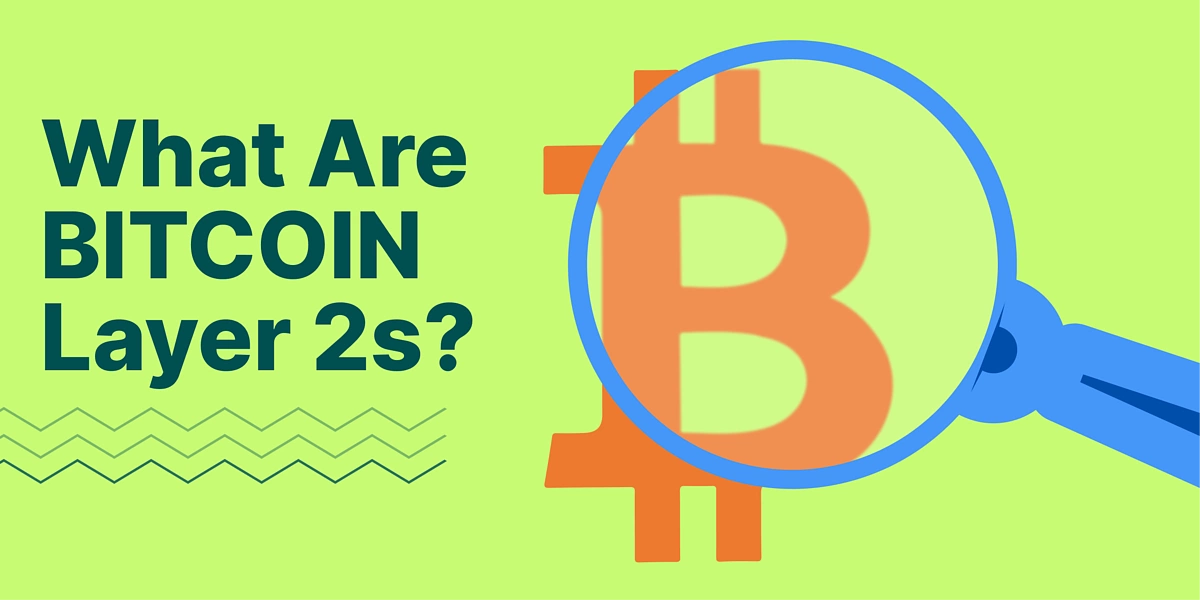
The Bitcoin network is only able to validate seven transactions per second, while this figure may seem paltry, it was in fact, sufficient at the time the technology went live. However, the growing adoption of Bitcoin, with the rise of Ordinals and BRC-20 tokens, has increased the demand on the Bitcoin blockchain, overpowering the network’s capabilities in several instances, resulting in spikes in gas fees.
As the Bitcoin blockchain was originally designed mainly for P2P transfer of value, it trails contemporary blockchain designs in throughput but also in application. Regardless, it still maintains its reputation as the most decentralized and secure Proof of Work (PoW) blockchain network. To improve the efficiency and grow the application of the Bitcoin blockchain, Bitcoin Layer 2 projects are proposing technologies that improve these while utilizing the richly decentralized and sufficiently secure Bitcoin network.
Bitcoin Layer 2s and How They Work
A blockchain network is made up of two interconnected layers – the execution layer and the consensus layer.
The execution layer handles the computation of transactions (state change requests) from the blockchain users and the sending of the details of these transactions to the consensus layer.
Meanwhile, the consensus layer runs the consensus algorithm and hosts miners (on PoW) or validators (on PoS) who verify the validation of transactions before approving them. The basis of Layer 2 projects is the development of an execution layer, separate from that on the mainnet, and also an efficient connection with the consensus layer of the main network.
Bitcoin Layer 2s are off-chain execution environments that compute transactions and submit details of the transactions to the consensus layer of the Bitcoin network. How the different Layer 2 projects achieve this may differ, however, the plain strategy is similar. Each solution strives to create and maintain a relationship with the main network; then create an environment where regular transactions and any other advanced operations can occur, and promptly contract the settlement layer of the main network where due. By submitting transactions for final settlement on the Bitcoin network, Bitcoin Layer 2 networks claim to achieve the same (or close to) level of security and decentralization as the Bitcoin blockchain.
Building a separate execution layer allows them the freedom to employ several technologies (such as rollups) that deliver higher efficiency than the main network. In summary, Bitcoin Layer 2s attempt to scale the Bitcoin blockchain by developing complementary execution layers that settle transactions on the Bitcoin blockchain. This enables them to achieve a higher throughput in addition to undeterred security and decentralization.
The shift from the mainnet also allows Layer 2 projects to create an execution layer that works significantly differently from that of the mainnet. Layer 2 projects can develop execution environments that can run operations that are not possible on the main network,, such as smart contracts, which is especially for a blockchain like Bitcoin.
Bitcoin L2s are becoming more prominent, however, Ethereum L2s are relatively more popular.
Bitcoin Layer 2s Vs Ethereum Layer 2s
The Bitcoin and Ethereum blockchain are both caught up with high demands by a growing user base. However, the Ethereum blockchain supports most contemporary blockchain applications like DeFi, NFTs, and more; this is not the same for the Bitcoin blockchain.
Layer 2 solutions for both networks apply similar strategies. As already explained, each Layer 2 network computes transactions on a separate execution layer and submits the transaction for settlement on the main network immediately or after a specific time interval.
The major difference is the purpose of these Layer 2 projects. Ethereum Layer 2 projects are mainly focused on scaling the network’s efficiency. For Bitcoin Layer 2 projects, this is just one of the two major purposes. Bitcoin Layer 2 projects not only attempt to scale the throughput of the Bitcoin network but also the applications. The Bitcoin blockchain doesn’t operate a virtual machine like the Ethereum blockchain, but Bitcoin L2 projects are developing execution layers that run virtual machines, some of them similar to the EVM used by the Ethereum blockchain. By this, the Bitcoin network gains an indirect virtual machine capability, allowing it to run smart contracts and other applications which new generation blockchains are known for.
|
Bitcoin Layer 2s |
Ethereum Layer 2s |
|
|
Settlement layer |
Bitcoin blockchain |
Ethereum blockchain |
|
Major purpose |
To scale speed, reduce cost, and introduce enhanced programmability |
To scale speed and reduce cost |
|
Dominant types |
State channels and sidechains |
Sidechains and rollups |
Types of Bitcoin Layer 2s
Now, let’s look at some of the types of Bitcoin Layer 2s available, and how they work.
State Channels
A cryptocurrency transaction between peers is basically a communication between two wallets and the consensus layer of the network. The state of the network changes after each transaction, and the validation layer examines the transaction before updating the whole network to the new state. State channel L2 networks are built around this setup; they utilize the partitionable communication between wallets and the execution layer to create an external channel for a cryptocurrency transaction; this channel is a plain communication layer.
While using a state channel L2 network, a new channel is created between the transacting parties. A multi-sig address is also created to hold Bitcoin on behalf of the transacting parties. This setup allows them to exchange information, creating a new state for each information exchanged. This is usually an asset transfer in which case the state change is a variation in the balances of the wallets. This change is recorded off-chain and for each new transaction, the channel overwrites the previous state. The communication on the state channel can proceed for as long as both parties desire.
At the end of each communication session, the channel is closed and the final state (the wallet balances at the end of the last transaction) is sent to the main network as a single transaction. The consensus layer updates the network’s state with the new data. State channels not only make the transactions faster but users also save on gas fees, especially where multiple transactions are run in a single session. An example of a state channel Bitcoin L2 network is the Bitcoin Lightning Network.
Sidechains
Sidechains are semi-autonomous networks. Unlike state channels, sidechains can run their own consensus algorithm; however, they still maintain a level of communication with the main network. Sidechains are standalone networks created as a spinoff of the mainnet. These networks can define their own architecture, which could be totally different from that of the main network. Bitcoin sidechain L2s are capable of running smart contract transactions and host advanced protocols like decentralized exchanges. Sidechains create a pathway for users to operate away from the mainnet.
Using a bridge, sidechains create communication between the main network. Users can transfer assets between both networks using the bridge. A smart contract is used to develop an asset lock and mint protocol that guides the asset movement. Designs for sidechains could differ significantly; some sidechains operate a separate security system. In cases like this, they do not extend the security structure of the Bitcoin mainnet and only share other resources like assets with the mainnet. In some other designs, the sidechain integrates the security facility of the main network, either as a complementary system or the main security facility of the sidechain. Examples of Bitcoin L2 networks that utilize sidechains include the Stacks network and Rootstock Infrastructure Framework (RIF).
Rollups
Rollups are primarily an execution layer. They maintain a relationship with the Bitcoin network as the consensus layer. Rollup L2 networks create an execution environment where users can perform an array of operations. Data from these transactions are sorted into batches and are submitted to the consensus layer of the mainnet for final settlement. Depending on the capability, a rollup batch can contain up to 10,000 transactions, and these transactions are submitted to the consensus layer of the mainnet for settlement at once. This way, Layer 2 rollup networks can achieve a significantly improved speed and reduced fees by bundling up multiple transactions and submitting them for finalization on the Layer 1 as a single transaction.
Rollups can be classified as optimistic or zero-knowledge rollups. Optimistic networks batch transactions without prior validations, as a security fix, there is a challenge period of around seven days, where anyone who suspects foul play can compute a fraud-proof to challenge the rollup transaction. Once the challenge period has elapsed, the batch is deemed valid and accepted on the Layer 1 chain.
Zero-knowledge rollups run preliminary validations on each transaction data using zero-knowledge validity proofs, removing the need for a querying period. As a result, transactions from zero knowledge rollups are hashed into the main net instantly. An example of a Bitcoin L2 rollup network is Merlin Network.
Top Bitcoin L2 Networks
The Bitcoin L2 network headcount is on the increase, where these networks offer solutions to known Bitcoin bottlenecks on a separate network. Here are some of the notable Bitcoin L2 networks.
Lightning Network
Joseph Poon and Thaddeus Dryja started working on the Bitcoin Lightning Network as early as 2015; however, a stable version of the project was launched three years later in 2018. The Lightning Network claims to process up to a million transactions per second, presenting a huge performance improvement, relative to the main network. The Bitcoin Lightning Network is a state channel L2 network that is built to process transactions between two parties away from the Bitcoin network. It creates a separate layer that consists of a set of nodes that run the Lightning Network software and the communicating wallets.
For each transaction session, a new channel is created. To create a Lightning Network channel, both parties deposit Bitcoin into a multi-sig address. The parties involved run transactions utilizing the Bitcoin held in the multi-sig address while the Lightning Network software rebalances the wallets. At the end of each session, the channel is terminated, and the network sends the transaction data to the main network for settlement as a single transaction.
The Lightning Networks allow an infinite number of transactions for the price of a single transaction, thereby saving costs in fees and delivering a superfast transaction platform. The Lightning Network has gained wide usage since its launch, independent merchants and some centralized exchanges have also integrated the solution for payment, user deposits, and withdrawals, respectively.
Stacks Network
Stacks is a semi-standalone Bitcoin sidechain. It runs its own consensus algorithm – the Proof of Transfer (PoX) consensus algorithm – and also operates a native token, Stacks (STX). PoX is a hybrid of PoS and Proof of Burn consensus algorithms. It connects miners on the Bitcoin blockchain and Stackers on the Stacks network.
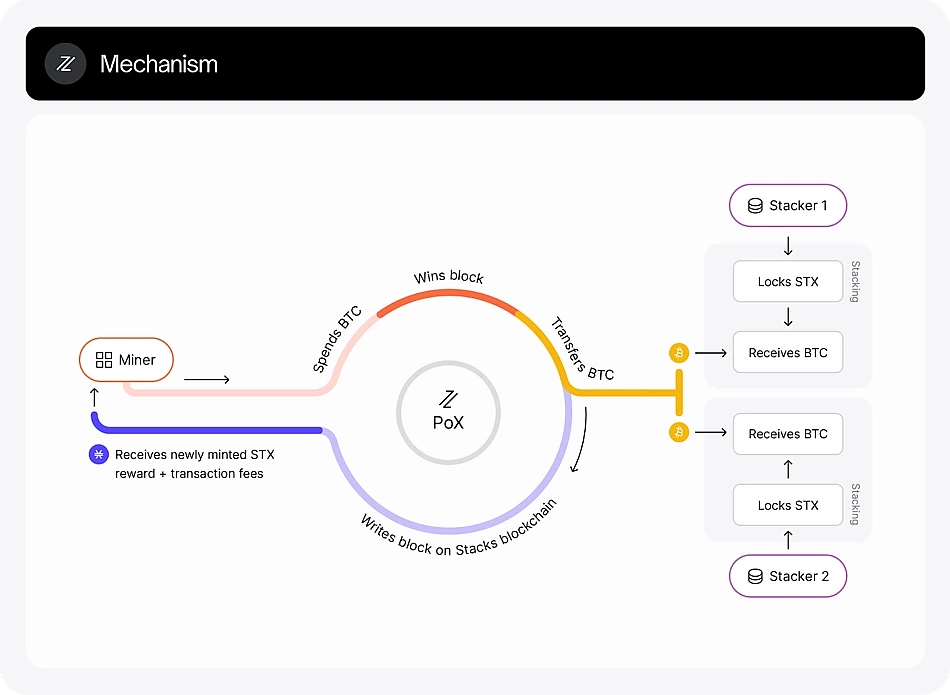
As in the PoS consensus algorithm, Stackers stake their STX tokens on the stack network while miners on the Bitcoin blockchain ‘bribe’ stackers (with Bitcoin) to earn the rights to validate a block on the Stacks network. The selected Bitcoin miner validates the block and earns rewards in STX. A miner’s chances of being selected to validate a block on the Stacks network is relative to the amount of Bitcoin they have committed to the network. Stackers on the other hand earn BTC rewards as an incentive for strengthening the Stacks network by locking their tokens. BTC earned by a stacker is relative to the amount of STX they locked on the network.
To put it simply, Stacks Network doesn’t settle transactions on the Bitcoin network, instead, it ‘borrows’ miners from the Bitcoin network to validate transactions on its own layer, thereby gaining a large pool of validators. Stacks operates a bridge that allows the bridging of Bitcoin between its network and the Bitcoin network, where Bitcoin bridged to Stacks network is represented as SBTC. The network is capable of running advanced smart contract operations and supports decentralized applications like DeFi protocols. According to DefiLlama, the TVL across DeFi protocols on the Stacks network is over $216 million at the time of writing.
Rootstock Infrastructure Framework (RIF)
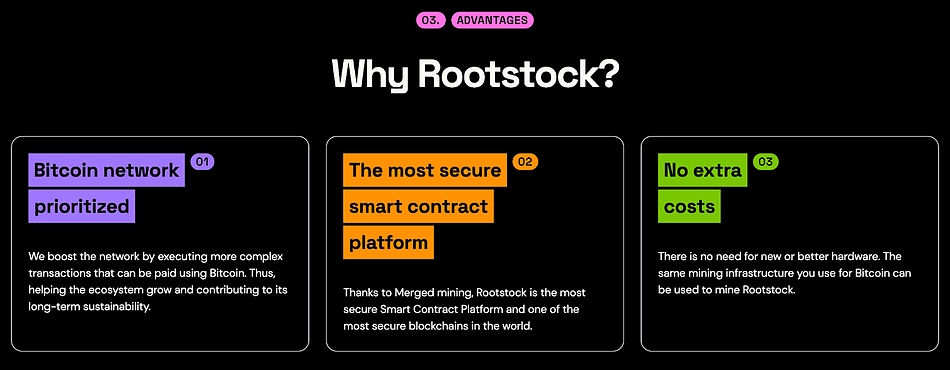
In December 2023, Uniswap developers submitted a proposal to deploy the decentralized exchange on the Rootstock network with a starting liquidity of $400k; citing a solid security environment, compatibility with the Bitcoin blockchain, and the EVM. Rootstock is an EVM-compatible Bitcoin sidechain. It runs the PoW consensus algorithm and interplays with the Bitcoin network via its two-way Proof of Work (PoWPeg) protocol that allows the transfer of assets between the Bitcoin network and Rootstock network. Users on the Bitcoin network lock their BTC on the Rootstock smart contract and mint an equivalent amount (at a 1:1 ratio) on the Rootstock network, where it is represented as RBTC.
The Rootstock network operates a consensus layer similar to that of the Bitcoin blockchain. It runs the PoW consensus algorithm and the hash rate on both networks is the same, therefore Bitcoin miners can validate blocks on both blockchains using the same facility, which is also known as Merged mining. Miners on the RootStock network are incentivized with RBTC. With an execution layer capable of advanced smart contract operations, Rootstock extends the functionality of the Bitcoin blockchain with more efficiency. At the time of writing, over $240 million worth of crypto assets are locked on DeFi protocols deployed on the Rootstock network.
Liquid Network
With a final settlement time of two minutes, Liquid Network claims to offer a faster layer for transacting with Bitcoin via its sidechain. It was launched in 2018 by Blockstream. The Liquid Network sidechain allows users to perform advanced operations like token issuance and running confidential transactions. Via a two-way peg facility, it allows Bitcoin holders to port their BTC between the Bitcoin and Liquid networks. Bitcoin bridged to the Liquid Network is represented as L-BTC (liquid BTC). The bridging facility offers a 1:1 asset representation on both networks using a burn and mint mechanism guided by smart contracts deployed on both networks.
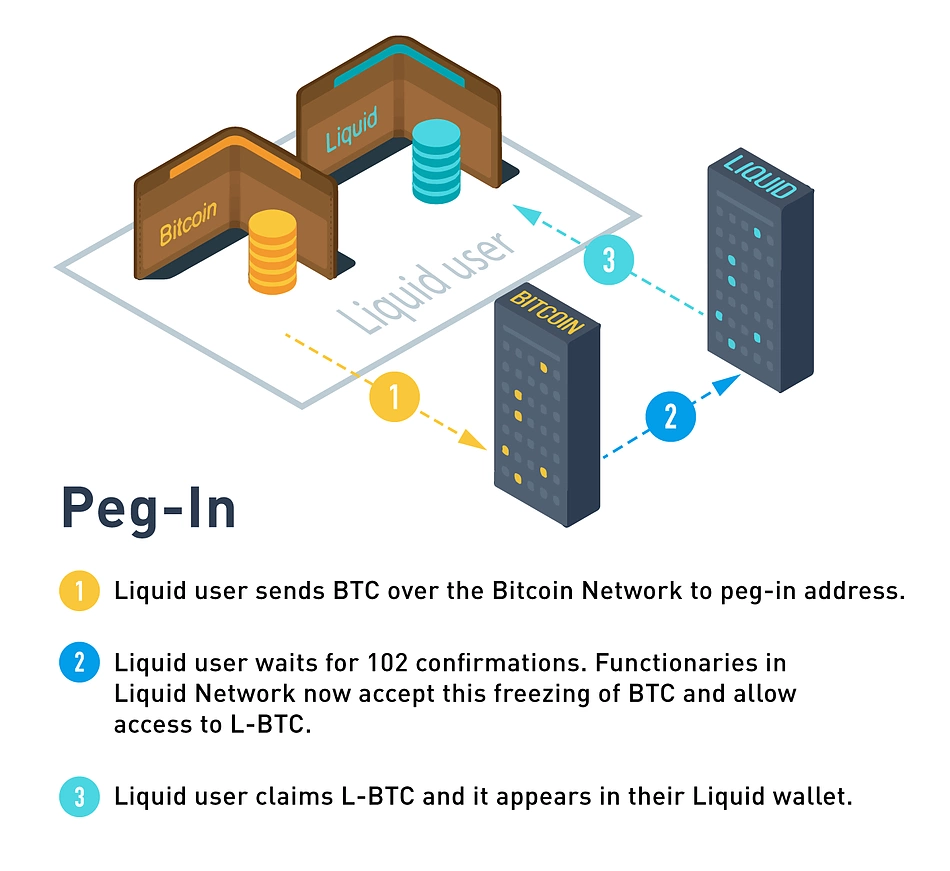
In place of a consensus algorithm like PoW, the Liquid Federation guards the Liquid Network. The Liquid Federation is composed of delegated parties including cryptocurrency organizations like centralized exchanges and prominent developers. The members of the Liquid Federation take up the role of transaction validation and running the two-way peg facility.
Merlin Network
Merlin is a Bitcoin native EVM-compatible Layer 2 rollup network. It is ‘native’ in the sense that, unlike most other EVM Bitcoin L2s, users can access the Merlin network via their Bitcoin wallets. Bitcoin wallet connection to the Merlin network is powered by BTC Connect, a Bitcoin native wallet protocol developed by Particle Network. Merlin supports EVM wallets and can be accessed via wallets like MetaMask. Merlin uses zero knowledge rollups to batch transactions performed on its execution layer for final settlement on the Bitcoin blockchain. By validating thousands of transactions at once, Merlin is able to achieve significant improvements in speed and resource management (fees), and by settling these transactions on the Bitcoin network, Merlin claims to maintain the security level (or close to) of the Bitcoin network.
Merlin’s EVM compatibility means that developers on Ethereum and other EVM networks can deploy their applications on the network without making significant changes to the original codebase. Merlin supports Ethereum and Bitcoin protocols and smart contracts like BRC-420 and ERC token standards. DeFi applications are already launching on the network and at the time of writing, DefiLlama reports an overall TVL of over $13 million for the Merlin network.
SatoshiVM
SatoshiVM is a zero knowledge rollup Bitcoin L2 network that is compatible with the EVM ecosystem. According to the project (at the time of writing) over 4,500 bitcoins have been bridged to the network and about 480,000 unique wallets have interacted with the network.
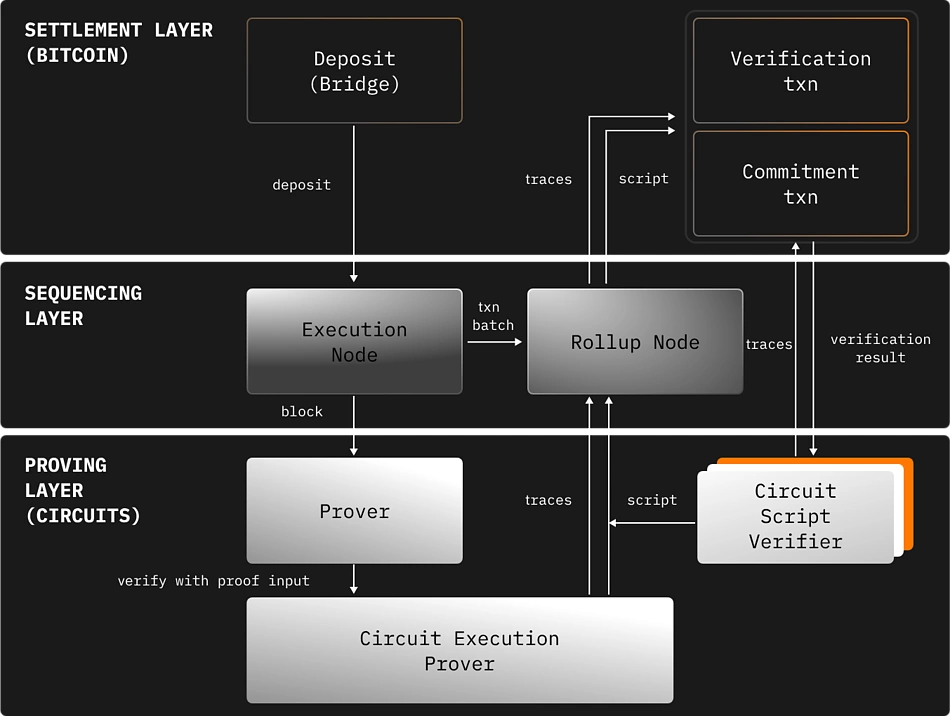
SatoshiVM operates an execution layer that uses rollups to batch transactions and submit them to the Bitcoin network for final settlement. This lets SatoshiVM achieve a significantly higher transaction speed while saving costs for users and maintaining sufficient decentralization and good security. The native token of the network is Bitcoin, and gas fees on SatoshiVM are also paid in Bitcoin.
Using this approach, SatoshiVM expands the use cases of Bitcoin and the application of the Bitcoin network. Bitcoin bridged to the network can be used on DeFi applications on the network. It is also capable of running other advanced operations like inscriptions (SARC20). SatoshiVM is still in the testnet stage at this time.
RGB
RGB is an off-chain smart contract protocol powered by the Bitcoin Lightning Network that allows transacting parties on a Lightning Network channel to design contractual agreements with or without issuing tokens. RGB is not necessarily a token protocol but supports the issuance of smart contract tokens. RGB is an improvement of colored coins and presents a smart contract protocol that operates away from the Bitcoin blockchain, allowing users to perform smart contract operations with significantly improved speed and reduced fees. It uses the Bitcoin blockchain as a state commitment layer, Bitcoin script as an ownership control system, and zero knowledge proofs to achieve transaction confidentiality.
As a supplementary protocol capable of interacting with the Bitcoin and Lightning Network, RGB presents an extra layer of programmability for the Bitcoin blockchain, allowing users to explore advanced blockchain-level automation while leveraging the Bitcoin architecture and paying even lesser fees compared to other smart contract protocols like ERC on Ethereum.
While Layer 2 projects strive to scale the Bitcoin network, a few challenges emerge. These are mostly around security and routine user experience.
Challenges of Bitcoin L2 networks.
Some of the challenges facing contemporary Bitcoin L2 networks include;
Secure Bridging Between Bitcoin and Its L2 Networks
Bitcoin L2 networks like sidechains use bridges to create a resource-sharing pathway between their network and the Bitcoin network. These bridges work via the traditional design: a smart contract on the source and destination chains that guides the locking of assets on the Bitcoin network, and the minting of an equivalent on the sidechain.
However, this design is known to have security and user experience issues. Bridges built this way have suffered hacks amounting to billions of dollars in losses to users. The lock and mint arrangement is prone to several security risks, although advanced bridging protocols are steering away from this approach and exploring more secure ways to create inter-chain connections. But at time of writing, Bitcoin L2 projects still rely on arrangements like this, thereby causing potential security concerns.
Speed and Cost of Settling Proofs on the Bitcoin Network
A rollup or state channel is only complete after the final settlement on the main network. The speed and the cost of settlement are significant for the L2 network. Bitcoin scaling networks have proven to be effective, however, future improvements in this area are still expected. As seen on Ethereum, notable effort is being made to further improve the speed and cost-effectiveness of L2 networks via the Dencun upgrade. If Bitcoin L2 networks must get better over time, a similar effort will be required from Bitcoin developers.
Final Thoughts
The Bitcoin Lightning Network developed a faster way to send Bitcoin at a time when one of the highest challenges of Bitcoin as a widely used financial instrument was its slow transaction processing speed. This solution grew as one of the most prominent attempts at scaling the Bitcoin network. With the advent of other Layer 2 Bitcoin scaling solutions, developing a faster way to transact Bitcoin is now just one of the goals of Bitcoin scaling. What this means for the Bitcoin blockchain could be argued amongst communities and the different Bitcoin schools of thought, however, the Bitcoin blockchain will certainly benefit significantly from an improved throughput and probably from an increased use case.
For Blockchain enthusiasts, the idea of running advanced operations like DeFi and NFTs on the most decentralized and secure blockchain is also enticing. Bitcoin Layer 2s claim to offer this and have enjoyed a positive reception so far. While it is not certain how these solutions will develop going forward, the progress made so far is significant.
Having said this, it is important to keep in mind that despite the progress being made, these solutions are still emerging and are prone to future changes. Adequate risk management strategies are also suggested. Also, note that this article is only for educational purposes and should not be taken as financial advice. Featured projects are not endorsed by CoinGecko.

Joel is deeply interested in the technologies behind cryptocurrencies and blockchain networks. In his over 7 years of involvement in the space, he helps startups build a stronger internet presence through written content. Follow the author on Twitter @agboifesinachi




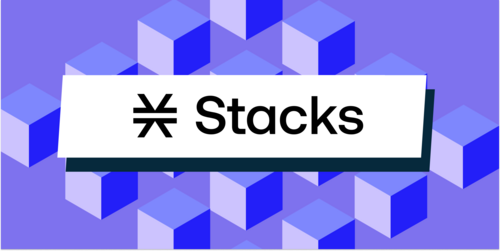




 Or check it out in the app stores
Or check it out in the app stores